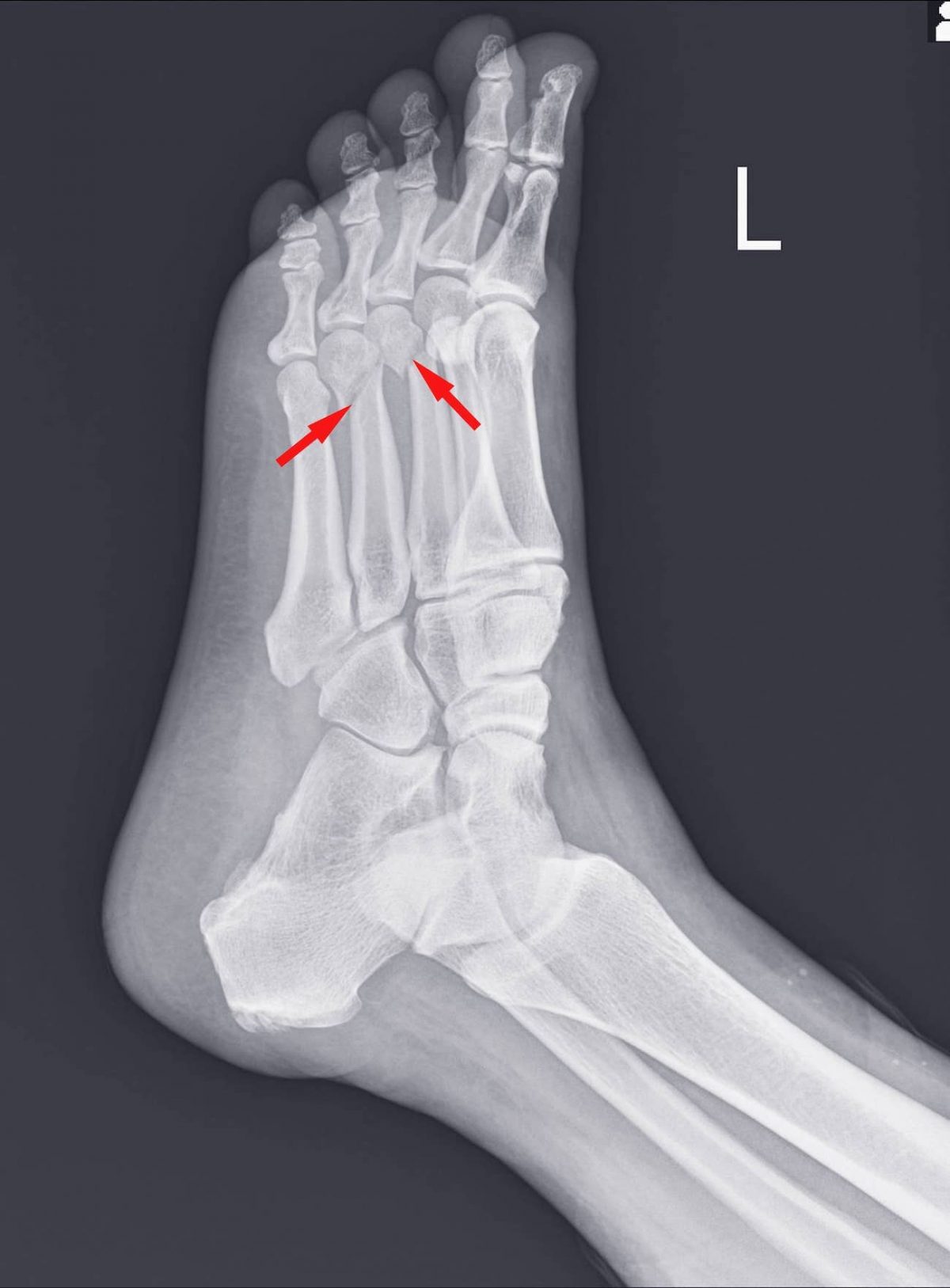
Many podiatric surgical procedures involve fixing problems with or affecting the toes.
With ten toes and even more bones and joints in your feet and ankles which impact how your toes function or appear, painful or debilitating toe issues are not uncommon.
Sometimes, when these problems are severe or other treatments have not effectively resolved the problem, metatarsal surgery may be necessary to address the issue and get you back on your feet.
What Exactly is the Metatarsal?
Behind each of your toes, running from the mid-section of your foot to the toe, is a long bone called the metatarsal.
The first metatarsal is the bone behind your big toes, while the fifth metatarsal is behind your little toes. These bones have a natural arc.
If one toe is too short or too long, or is pointing too far up or down, that arc will be altered and disrupted.
This can lead to increased pressure under or near the problematic bone which in turn can cause joint inflammation, bunions, stress fractures or calluses, all of which can be painful.
When is Metatarsal Surgery Recommended?
Most metatarsal surgeries are performed on the first metatarsal to address bunion deformities.

Pain on the bottom or ball of the foot can also be addressed by operating on the other metatarsals to redistribute how the foot bears weight.
Metatarsal surgery is also often recommended or needed when one of the bones has fractured due to injury.
What is Involved in Metatarsal Surgery?
Most metatarsal procedures involve cutting the metatarsal bone right behind the toe.
The surgeon will then manually elevate or adjust the toe and secure it in its correct position with a metal screw or pin.
After the procedure, a cast or splint may be needed, and crutches may be necessary for several weeks to keep pressure and weight off of the foot while it heals.
Walking prematurely on the treated foot can impact the success of the surgery by causing the affected toes to shift from their newly set position and heal incorrectly.
Pins can generally be removed after three to four weeks, and you should be able to move forward without the pain or limitations you experienced before your metatarsal surgery.
Call Our Foot and Ankle Specialists at JAWS Podiatry Today
Metatarsal surgery is just one of the many ways we treat toe, foot and ankle problems at JAWS Podiatry.
Our foot and ankle specialists will explore all possible alternatives to see if a non-surgical solution can address your problem.
But if we do recommend surgery, our experienced podiatrist will perform your procedure with the utmost care and precision, using the most advanced technology and methods.
Please call us today at (954) 922-7333 or contact us online to schedule a consultation.
- The Life-Changing Power of Cosmetic Foot Surgery - February 27, 2023
- What Are The Most Common Pediatric Foot Conditions? - October 5, 2020
- 4 Important Things To Know Before Having Foot Surgery - September 21, 2020



